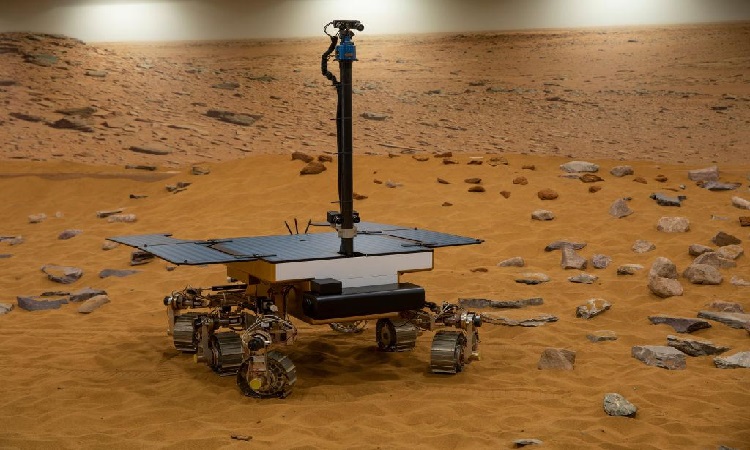Jointly developed by the European Space Agency and Russia, the ExoMars 2022 mission was to be launched in September with the objective of probing for the presence of extraterrestrial life. The conflict in Ukraine ultimately led to a rift between the two sides. Now the ESA is trying to revise its plans without Russia. In the meantime, the rover has returned to Italy.
For several years, the European Space Agency (ESA) and the Russian agency Roscosmos have been working on a joint mission to Mars. Its main objective is similar to that of Perseverance, namely to search for traces of past microbial life. Once there, in the region of Oxia Planum, the idea was to release a rover named Rosalind Franklin, developed by Europe, in charge of collecting samples. The Russians were to offer a scientific platform responsible for probing the local environment and analyzing these samples. Finally, Russia also had to provide the Proton rocket to launch it all.
Initially, this mission was to be launched in 2020. This launch finally had to be postponed for reasons related to the Covid-19 pandemic, but also technical. According to the latest news, ESA and Russia were to take advantage of a new launch window open next September. Since then, there has been war in Ukraine and the divorce between the two parties is well and truly underway.
An uncertain future
With the cancellation of this September launch, the rover components will now be stored in Italy until further notice. It is unclear what the future of the mission will be. In a statement issued a few days ago, the ESA said several proposals on how to proceed without Russian involvement would soon be submitted.
It would still be sad if a mission of such magnitude could not see the light of day. While the goal is much the same as Perseverance, Rosalind Franklin is indeed designed to do certain things that her cousin cannot. In particular, it would be able to drill up to two meters deep in the Martian soil, a feat that even the “mole” of the American Insight lander could not achieve.
The Oxia Planum landing site is also promising. It is indeed a plain found a little further north of the equator of Mars which presents several clay channels which testify to a humid past.
Whatever happens, it will be necessary to wait for the next opening window (i.e. at least two years) before the mission can be launched.



